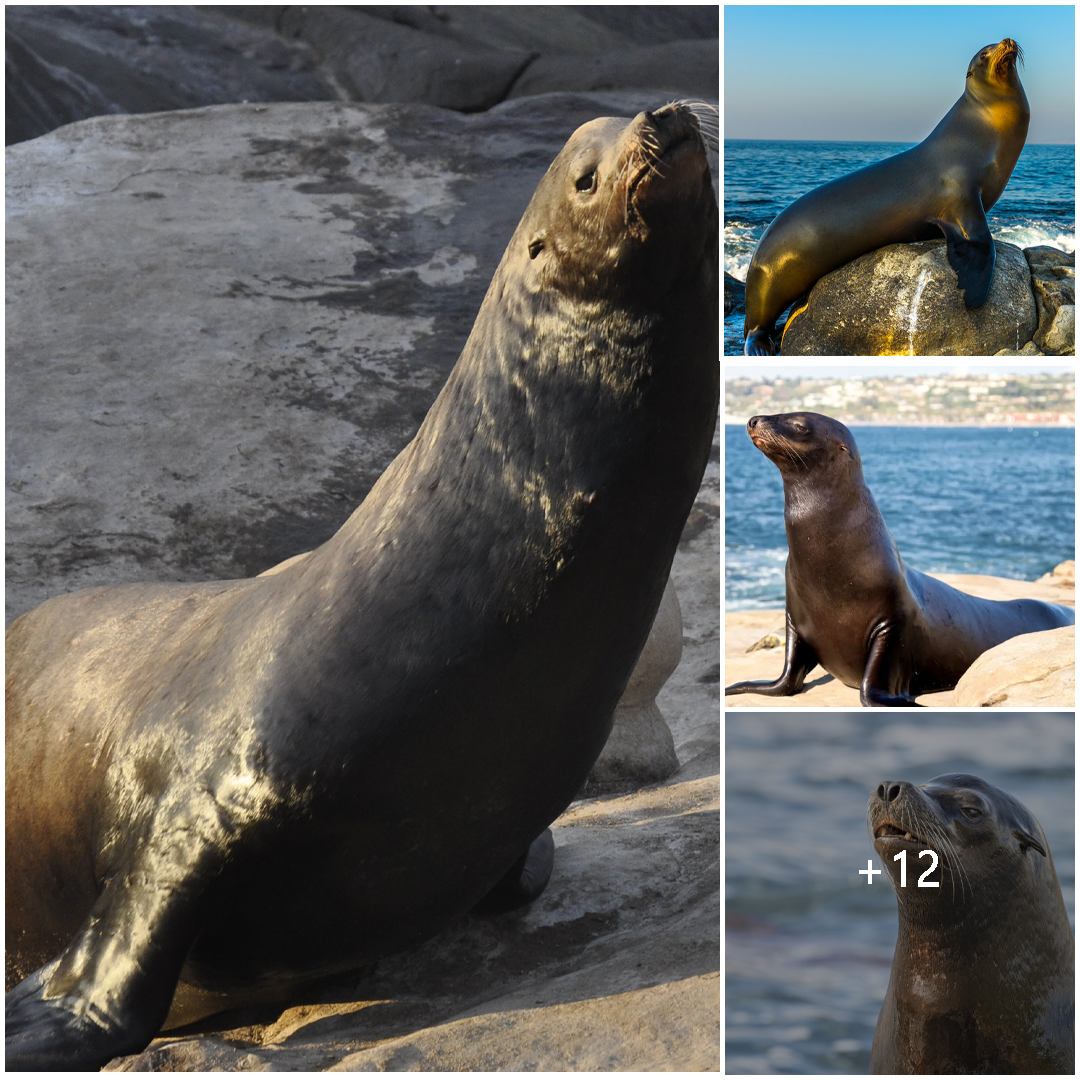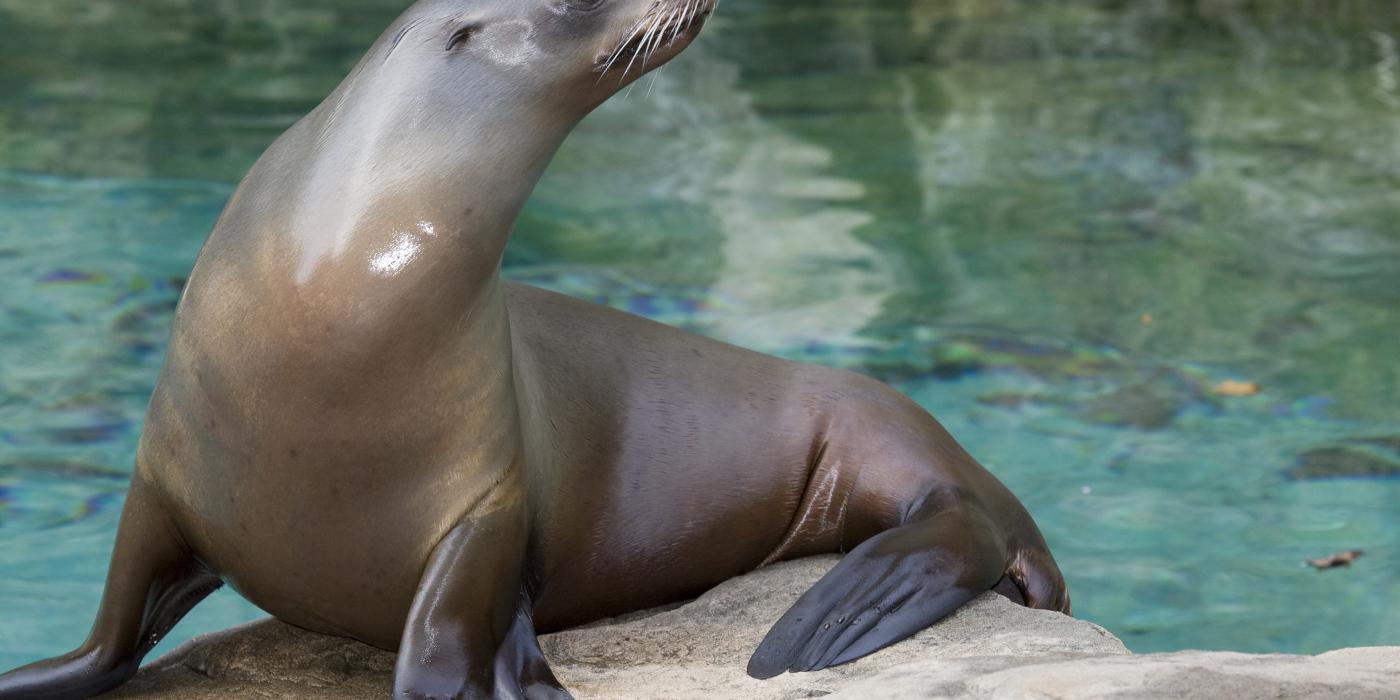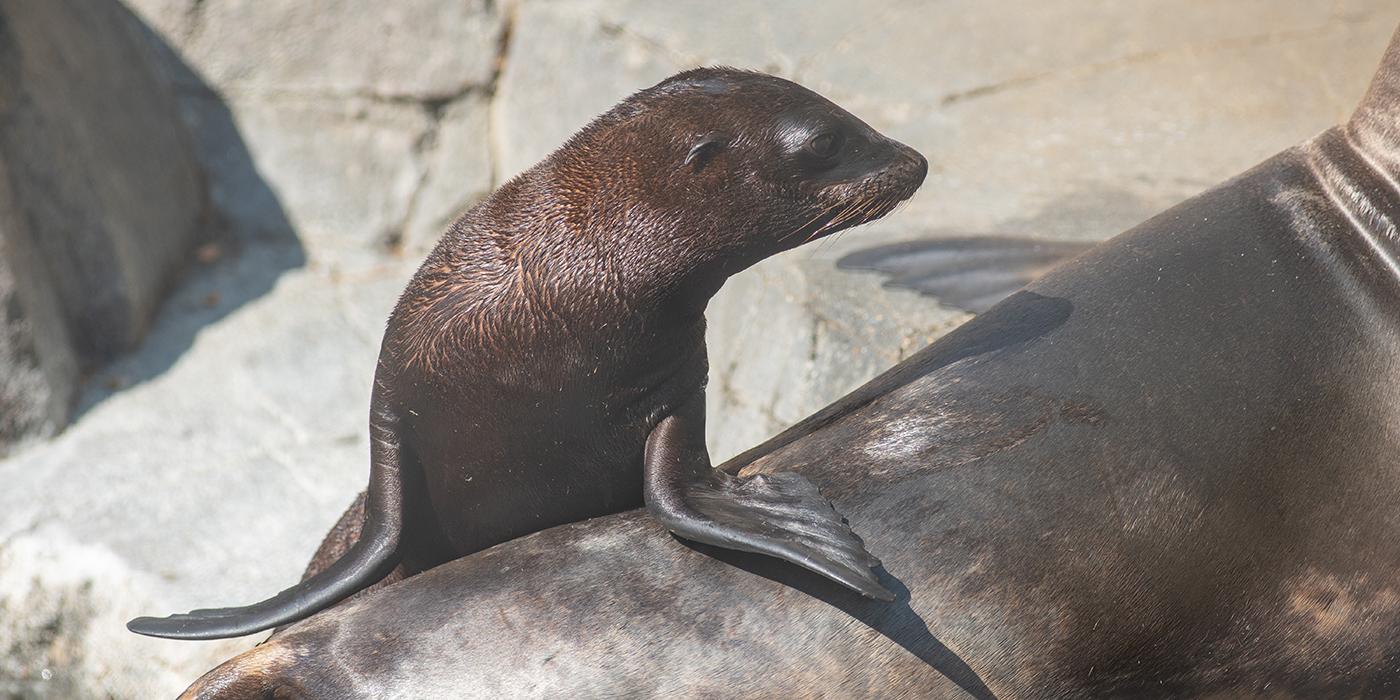
Sea lions, along with fur seals, are considered eared seals. Their visible ear flaps distinguish them from true seals. They also use their fore flippers to propel themselves through the water, whereas true seals rely primarily on their back flippers to swim.
Males are generally a dark chestnut brown, although some males have lighter coloring on their head, muzzle, sides, hind and belly. Females and juveniles are usually tan. Both sexes have a sleek, single hair coat, which also distinguishes them from true seals.
At about 5 years old, males develop a noticeable crest that runs lengthwise along the top of their skull creating a high, domed forehead. The fur on this crest usually becomes increasingly lighter as a sea lion ages.
California sea lions lack the “mane” that gives sea lions their name. They also have a more slender neck than some species and a dog-like head.
California sea lions have many adaptations for their aquatic lifestyle. Their limbs are short with elongated digits encased in cartilage and connective tissue to form flippers. They have strong, bulky shoulders and their streamlined, torpedo-shaped bodies taper to the tail.
Their front flippers are especially long and are used for propelling them through the water. Their back flippers are used as rudders and have three claws for grooming.
On land, these sea lions move by rotating their rear flippers under their bodies and supporting their body weight on all four flippers. Although California sea lions appear clumsy when moving on land, their movement through the water appears almost effortless.

The flexibility of their bodies allows them to make tight, twisting turns as they play or pursue fish, and they can quickly reach speeds of 25-30 mph (40-48 kph) while hunting, avoiding predators or simply playing.
A layer of blubber, or fat, insulates the sea lion’s body, and the circulatory system can shunt the blood supply to the extremities and outer surface of the body. Meanwhile, a layer of fur traps water next to the skin and warms it to body temperature. The California sea lion’s small body surface in proportion to its volume also reduces the amount of heat lost to its surroundings.
Overheating can often be a problem for California sea lions, and they use behavioral means to cool off, such as resting with a flipper in the water, flipping sand over their back or flipper fanning in the water.
These predators have excellent senses. Their eyesight is well developed, because they spend a lot of time underwater with reduced light levels. At the surface, where there is brightness and glare, the sea lion’s pupil can contract to a tiny pinhole, protecting its sensitive retinas.
Though the sea lion’s ear flaps are small, it can hear quite well both above and below the surface. Its ears are also valvular and close underwater. Sea lions often vocalize underwater and are able to easily locate sound sources.
Their sensitive whiskers, called vibrissae, can rotate forward and detect the slight movements of fish swimming nearby, enabling California sea lions to find and capture prey in total darkness.
California sea lions seem to have an acute sense of smell. Their nostrils are closed at rest and have to be opened to take a breath.






